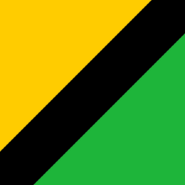Logun
This article is a construction site. This project is currently undergoing significant construction and/or revamp. By all means, take a look around, thank you. |
| Logun | |
|---|---|
| ija'nja logun | |
 Apisnja Logun; the Logun flag | |
| Pronunciation | [iz̠a.nz̠a ˈlo.kʊ̃] |
| Created by | Jukethatbox |
| Date | 2025 |
| Setting | Radael |
| Native to | Njalogun[a] |
| Ethnicity | Logun people |
| Native speakers | 14,145,670 (350 BH) |
Upé-Ontic(?)
| |
Early forms | Old Logun
|
Standard form | Bhogàn Logun
|
| Official status | |
Official language in | Minūrun, Tibirotak |
Recognised minority language in | Teš |
Logun(Logun: ija'nja logun [iz̠a.nz̠a ˈlo.kʊ̃]) is an Upé language and the native language of the Logun people(obela logun) of Minūrun and Tibirotak. It is one of the official languages of and the most spoken language of Minūrun with 12.3 million speakers, making up around 33.5% of the 36,718,418 strong Minurese population, most of them situated in the north-east of the country. It is also a prominent language of the Minurese vassal of Tibirotak, where it is spoken by around 12.3% of the population primarily in the south-east.
Together, these traditionally Logun lands are called the Njalogun;[a] it is estimated that there are around 14,145,670 Logun people with around 78.1% who are monolingual Logun speakers; the highest rate of native monolingualism among all Minurese ethnic groups. Additionally, most bilingual Logun people are Teški, and thus only speak Teš, also an Upé language, in addition to Logun.
Phonology
Consonants
| Bilabial | Alveolar | Post-alveolar | Palatal | Velar | ||||
|---|---|---|---|---|---|---|---|---|
| Stop | pulmonic | p | t | d | k | |||
| velarised | pˠ | tˠ | dˠ | |||||
| Nasal | m | n | (ɲ) | ŋ | ||||
| Fricative | s | z | s̠ | z̠ | ʝ | x | ||
| Semivowels/Liquids | (w) | l | j | |||||
It has also been proposed that /ⁿz̠/ and /ⁿs̠/ are separate phonemes, such as in -nja "genitive case marker" and ja "what", though generally in these cases they are simply analysed as nasal-obstruent clusters.
Vowels
| Front | Back | ||||
|---|---|---|---|---|---|
| oral | nasal | oral | nasal | ||
| Close | i | ĩ | u | ʊ̃ | |
| Mid | ɛ | ẽ | o | õ | |
| Open | a | ||||
Logun vowels contrast on nasality with oral and nasal vowels. These nasal vowels are generally orthographically represented by a proceeding ⟨n⟩; in the case of an oral vowel-nasal consonant cluster, the vowel is accented with a grave accent, for example den [ˈdẽ] "to move" vs dèn [ˈdɛn] "very". In the case of a nasal vowel-nasal consonant, the ⟨n⟩ is doubled, as in benun [pɛˈnʊ̃] "nut" vs bhenunn [ˈpˠɛnʊ̃n] "plateau".
Grammar
Personal pronouns
| Singular | Plural | ||
|---|---|---|---|
| First person |
Inclusive | bhe | katan |
| Exclusive | ùnkan | ||
| Second person | neutral | onn | ngòn[b] |
| formal[c] | onlak | ||
| Third person | masc. | am | |
| fem. | mon | sèna | |
| neut. | yoth | ayoth | |
| formal[c] | yo ngàn | ayo ngàn | |
The use of the formal third-person pronoun yo ngàn and ayo ngàn are borrowed from Teš; reanalysed from hī ōncan [jiː oːŋɐː] "this honourable minister". This also lead to the modern use of the word ngàn to mean "holy".
Articles
| Nominative | Accusative | Dative | Ablative | Locative | |
|---|---|---|---|---|---|
| Indefinite | ka | kanno | kabi | kabo | kadu |
| Definite | enka | onka | enkabi | enkabo | enkadu |
Articles are postpositional and agree with all cases apart from genitive; in the case of a genitive phrase, the article will take the case from its position in the sentence, e.g.:
- Manya'nja bhenlok enka co ladib.
- "The people's revolution was inevitable."
In this case, the definite article is in the nominative. However, in this context:
- Am pilankan manya'nja bhenlok onka.
- "He hated the people's revolution."
The article instead takes its accusative form to show its position in the sentence.
Noun case
Bhladh Logun retained six of the seven Proto-Upé cases, and by the development of modern Logun, the seventh, the so-called attributive case, was reborrowed from Teš.
Case markers also vary based on the sound at the end; either a consonant, oral, or nasal vowel.
| Ending | Examples | Meaning | |||
|---|---|---|---|---|---|
| bojuk "sister" |
ennu "tree" |
leden "afternoon" | |||
| Nominative | ∅ | bojuk | ennu | leden | sister/tree/afternoon |
| Accusative | -i, -bi, -ni | bojuki | ennubi | ledenni | sister/tree/afternoon |
| Genitive | -nja, -'nja, -ja | bojuknja | ennu'nja | ledenja | sister's/tree's/afternoon's |
| Dative | -yo | bojukyo | ennuyo | ledenyo[d] | to sister/to tree/to afternoon |
| Ablative | -la, -bha | bojukla | ennubha | ledenbha | away from sister/away from tree/away from afternoon |
| Locative | -a, -da, -dan | bojuka | ennuda | ledendan | at sister/at tree/at afternoon |
Word order
Logun's word order changes based on the object of the sentence. For example, in nominative-accusative phrases, the word order is SVO:
- Mannik unkeke yoti kanno.
- Mannik pick.PRES apple-ACC INDEF.ACC
- "Mannik picks an apple."
However, any "directional" phrases(to him, towards him, away from him, etc.) are always first in order:
- Ennubha enkabo Mannik unkeke yoti kanno.
- tree-ABL DEF.ABL Mannik pick.PRES apple-ACC INDEF.ACC
- "Mannik picks an apple from the tree."
This still applies even when there is no direct object:
- Ennubha enkabo tebònon enka co.
- tree-ABL DEF.ABL pixie DEF be
- "The pixies appeared from the tree."
